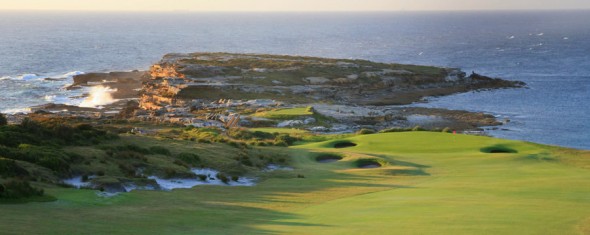
Learning From Mackenzie’s Design Principles
Guest Blogger: Jeremy Dale
Jeremy Dale has performed in over 35 countries as a golf trick-shot artist and competed professionally both right and left-handed. Jeremy is also a PGA coach, TV presenter, and After-Dinner Speaker, and has a degree in Psychology from Sussex University.
Last month I played at four of the finest courses in Australia – Royal Melbourne (special treat on my 50th birthday!), Kingston Heath, Huntingdale and the New South Wales Golf Club in Sydney.
With the exception of Huntingdale (home of the Australian Masters), these courses were designed by the great British golf course architect, Alister Mackenzie, who gave us many other classics like Augusta National and Cypress Point in the US, as well as the beautiful Alwoodley and Moortown Golf Clubs in England.
No rough, firm conditions
These world class Australian courses are extremely popular with all levels of golfer and interestingly, have many common design features. The fairways are very wide in places and the ground conditions are firm not soft. There is also a complete absence of rough around the greens, which all feature interesting slopes and bunkers that really cut into the greens.
Hazards are not for punishment!
Mackenzie’s aim was to make the game interesting and make his courses playable for anyone – young, old, expert or beginner.
Around the greens these courses are certainly not easy but, playing in a very mixed ability group, we hardly lost a ball and everyone enjoyed their game. Mackenzie had one brilliant idea that I especially like. He stated that the purpose of a hazard is not to punish a bad shot, but to make the round more interesting.
The Spirit of St Andrews
Mackenzie was not an accomplished player himself. In fact, before he went to Australia a friend advised him not to let his clients see him play! This may well have been one of his strengths, since he understood very well the problems of the handicap golfer, and did not just build difficult courses that only the best could play. In his view anyone could do that.
More of his ideas can be found in his excellent book, the Spirit of St Andrews, which would make a great Xmas present for any golfer.
Why clubs should copy Mackenzie’s ideas
Not every course has such great architecture but clubs can perhaps best present what they do have by adopting some of Mackenzie’s ideas.
Last summer (in England), I played a tree-lined course where the conditions were the complete opposite of what I would like to play. The greens (in one of the driest summers for ages) were so soft and over-watered that each iron shot left a huge pitch mark. Under the trees, from which a recovery was already difficult enough, there was lots of thick rough so that much time was spent looking for balls and then hacking out instead of being tempted into an interesting recovery shot. It was not much fun at all.
Wider fairways allow more strategy
The Mackenzie courses all had very wide fairways but there was usually a risk reward choice or a perfect spot on one side of the fairway that opened up the green – depending on the pin position. A narrow fairway gives fewer options for challenging hazards or making angles and can reduce the game to a straight hitting contest. This is fine on some holes in the round but most golfers find it quite tiresome over a full 18.
You may think that long rough and narrow fairways are what makes a course a proper tournament test but it is not always the case. Everyone remembers that Davis Love asked for all the rough to be cut down for the 2012 Ryder Cup at Medinah. There was hardly any rough at all which was controversial at the start of the week but it allowed the players to produce great matches.
Even the USGA have relented on rough when they took the US Open to a restored Pinehurst in 2014, so perhaps we are seeing the start of a trend away from thick rough as a hazard – something Mackenzie warned was really bad for the game.
Courses do not need to become still more difficult
Participation in golf has been reported as declining according to many reports like this one earlier this year. If we want golf to start growing again, we cannot present newcomers with ever longer, narrower, more difficult courses and expect them to enjoy it. No one comes to the golf club to be punished by the course – the game itself will do that perfectly well, as we all know!
If we want to keep existing golfers interested then it would help if the courses were as sporting and exciting as they can possibly be.
Mackenzie certainly helped them achieve that in Melbourne and Sydney. Visit them if you get the chance.
Excellent article. We agree that MacKenzie was a true visionary. But we would say that wouldn’t we as he designed Teignmouth in 1924 and it still boasts a number of unmistakeable MacKenzie trademarks.
Must say that Teignmouth looks lovely… a course we’re keen to sample. Well written article by Jeremy though – things many courses could adopt!
Mark, Thank you for your kind comments and glad you enjoyed the article. I have never played Teignmouth but will put it on my shopping list! Have you played many other AMac courses?